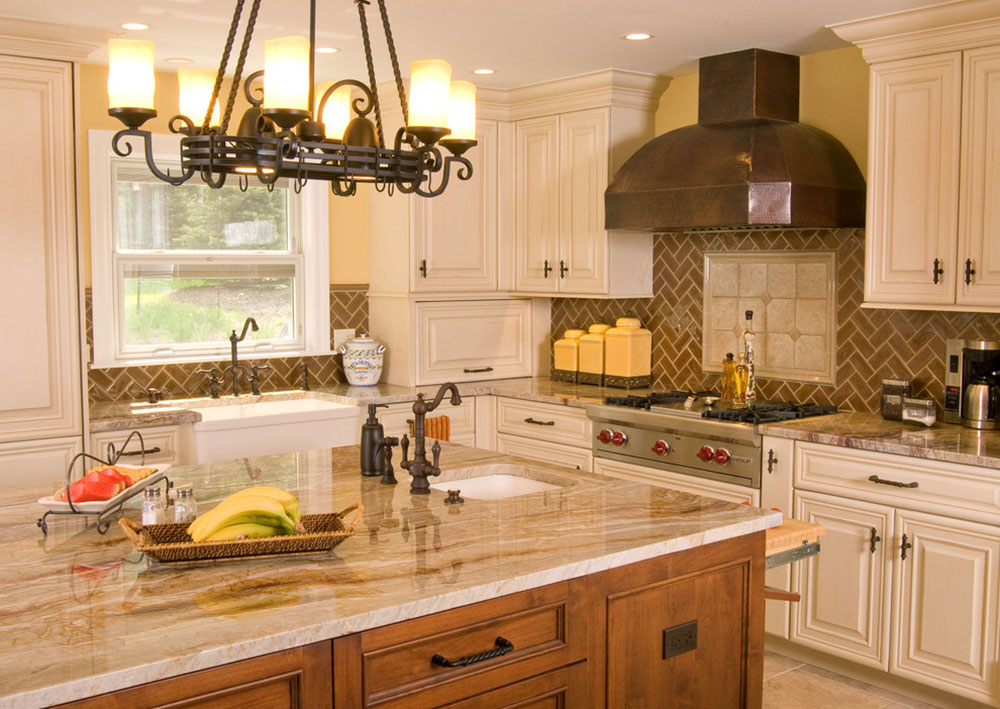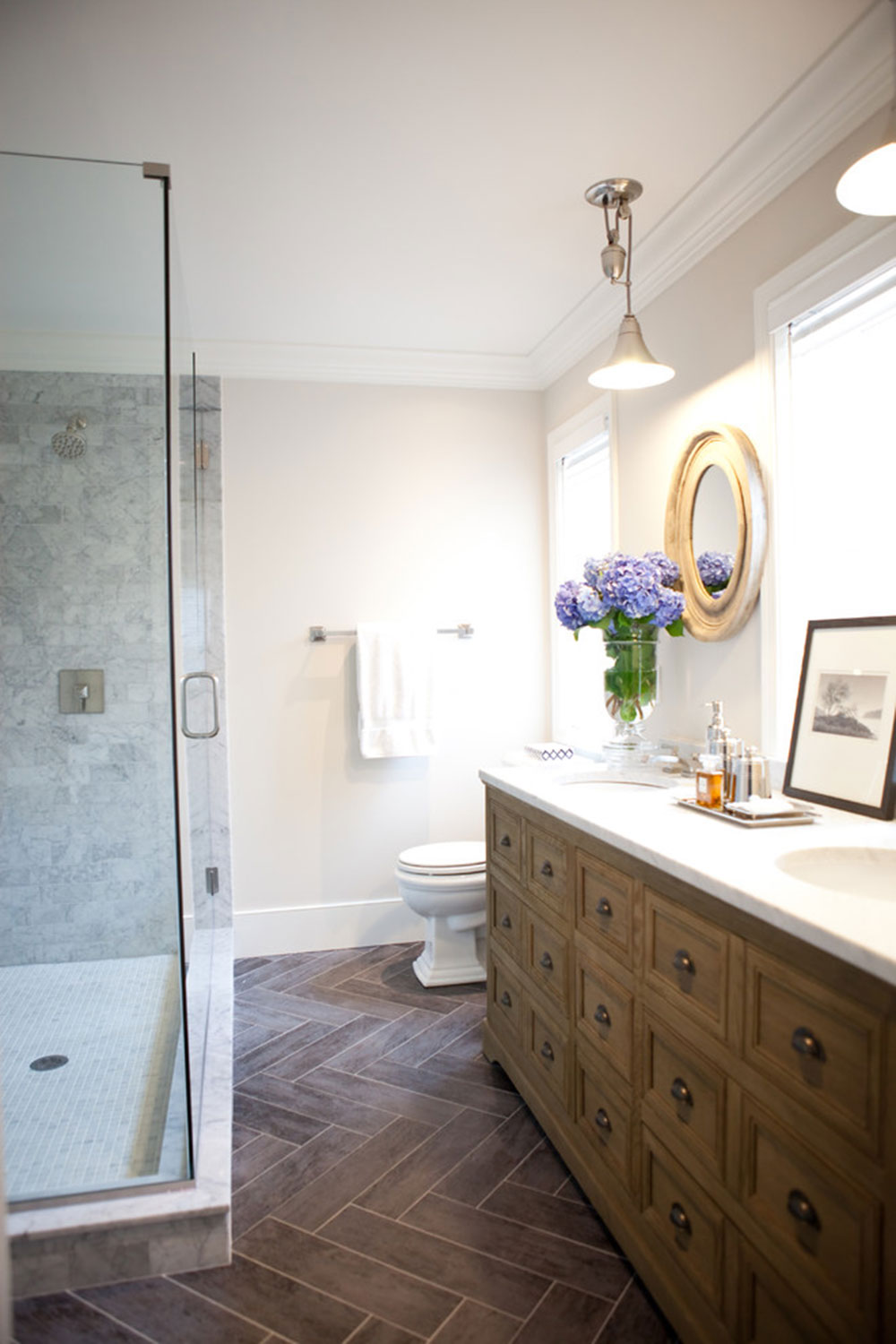Advertisement
Herringbone is a pattern named after the intricate bone structure of the herring fish. The herringbone pattern consists of rectangular pieces in a zig-zag pattern.
Each tile is arranged in a way that one is met with another on each side, but not in a uniform way.
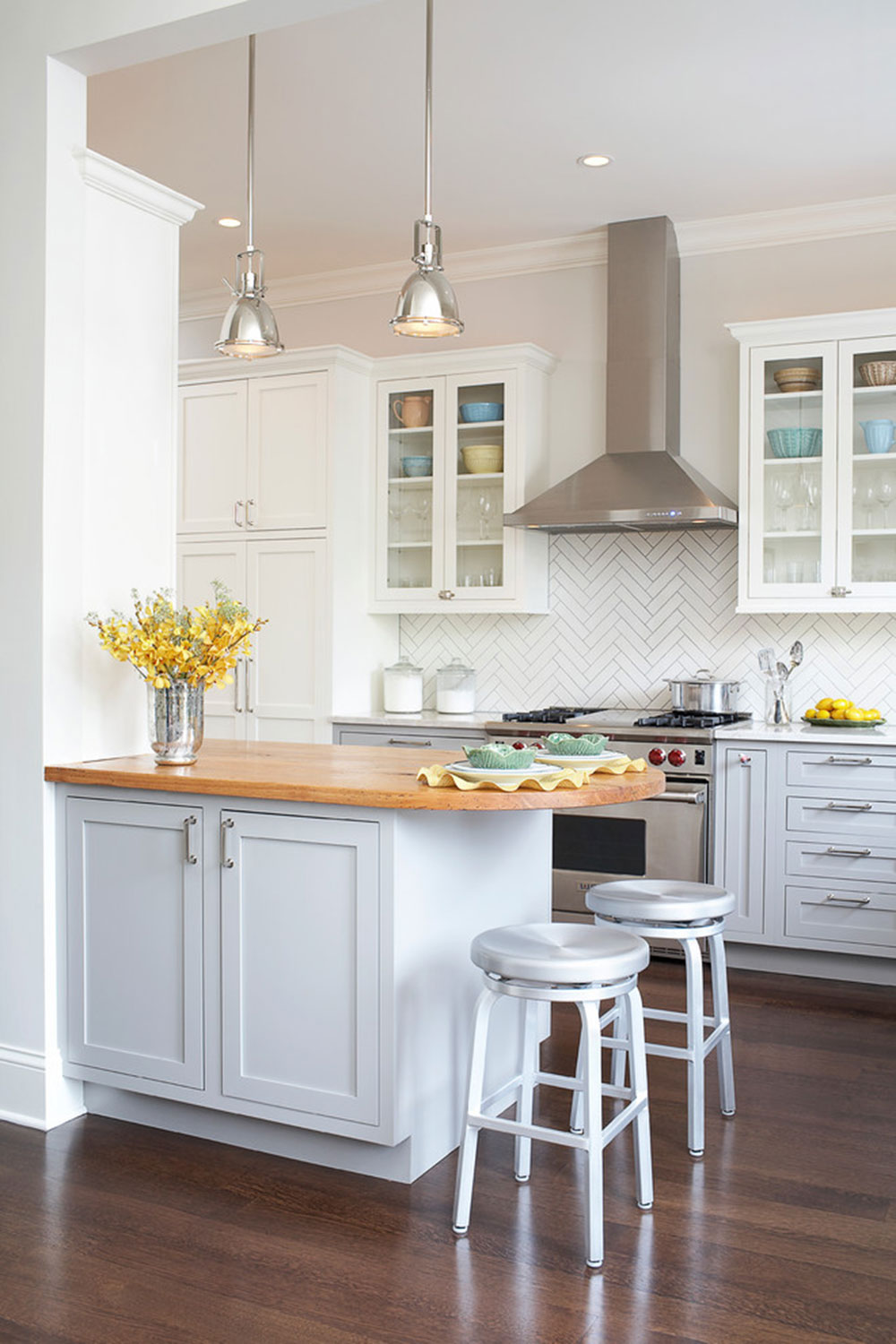 Image source: Mahogany Builders
Image source: Mahogany Builders
Herringbone is a popular pattern for interior design, partly because it can be used for almost anything—flooring, curtains, furniture, blankets, and more.
Herringbone vs Chevron
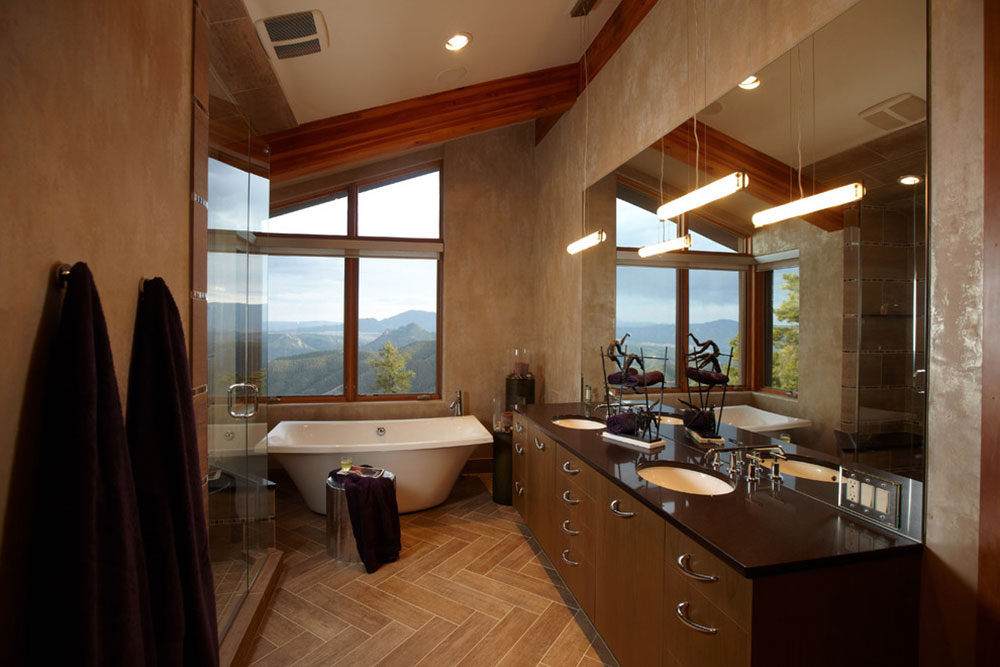 Image source: Jaque Bethke for PURE Design Environments Inc.
Image source: Jaque Bethke for PURE Design Environments Inc.
Herringbone can be easily confused with chevron for those who do not know the difference. Herringbone tiles are arranged so that one rectangular tile looks as though it is sliding off another.
The tiles seem to almost crash together at the ends, creating a zig-zag line at the between two rows of tiles. At the end of one tile is another tile along the edge at a perpendicular angle.
Think of the herringbone pattern as two sets of windows blinds that have collided with one another so that one set of blinds is in between the other blinds.
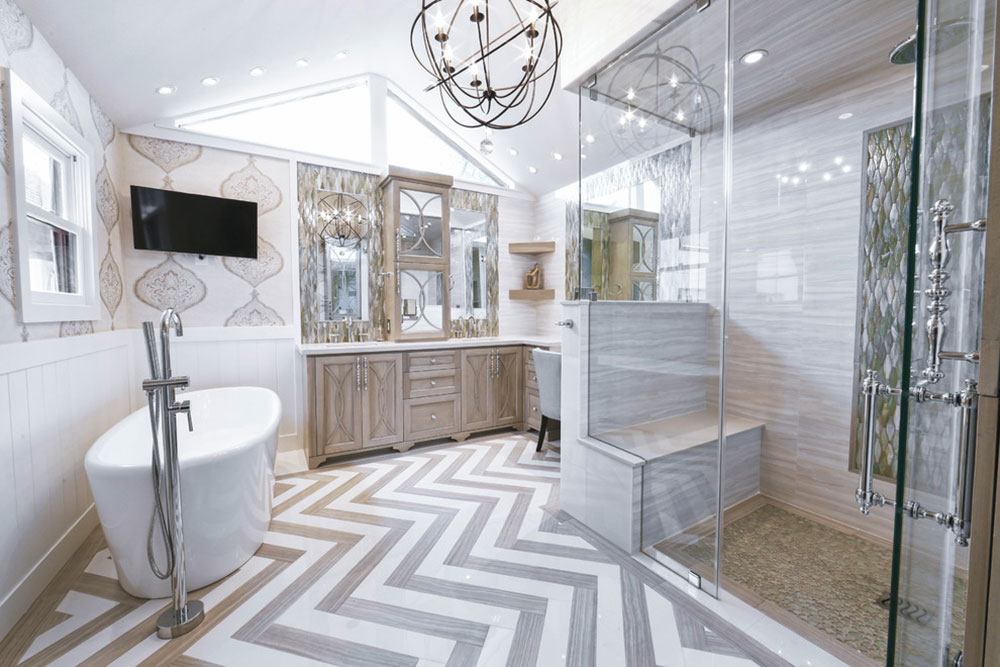 Image source: Sweetlake Interior Design LLC
Image source: Sweetlake Interior Design LLC
The chevron tile pattern does not create the same zig-zag pattern. The rectangular tiles are uniform with each tiles in one row following the same direction.
Where two rows of tiles meet, there is a straight line right down the middle. The chevron pattern tile creates a “V” shape in that on tile in aimed upwards, and the tile next to it is aimed downwards.
Looking across from one tile to the next, the zig-zag pattern for chevron is continuous, giving the pattern an almost wavy look.
Using Herringbone
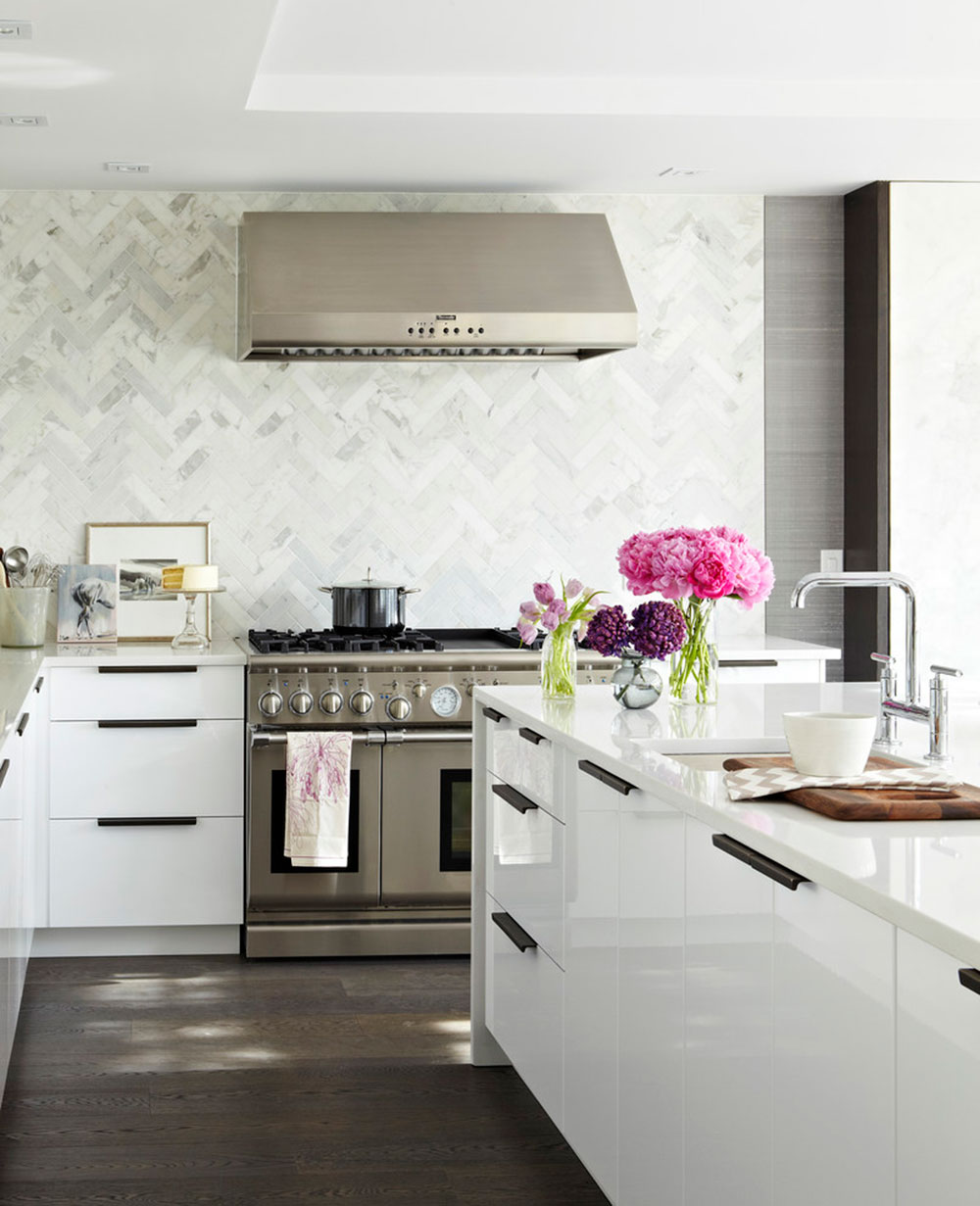 Image source: Croma Design Inc
Image source: Croma Design Inc
There are countless ways herringbone can be used through the house. It’s unique design allows for texture and variety. The design can be used for almost anything from the floor to the ceiling. You can even have a nice herringbone tile backsplash.
Flooring
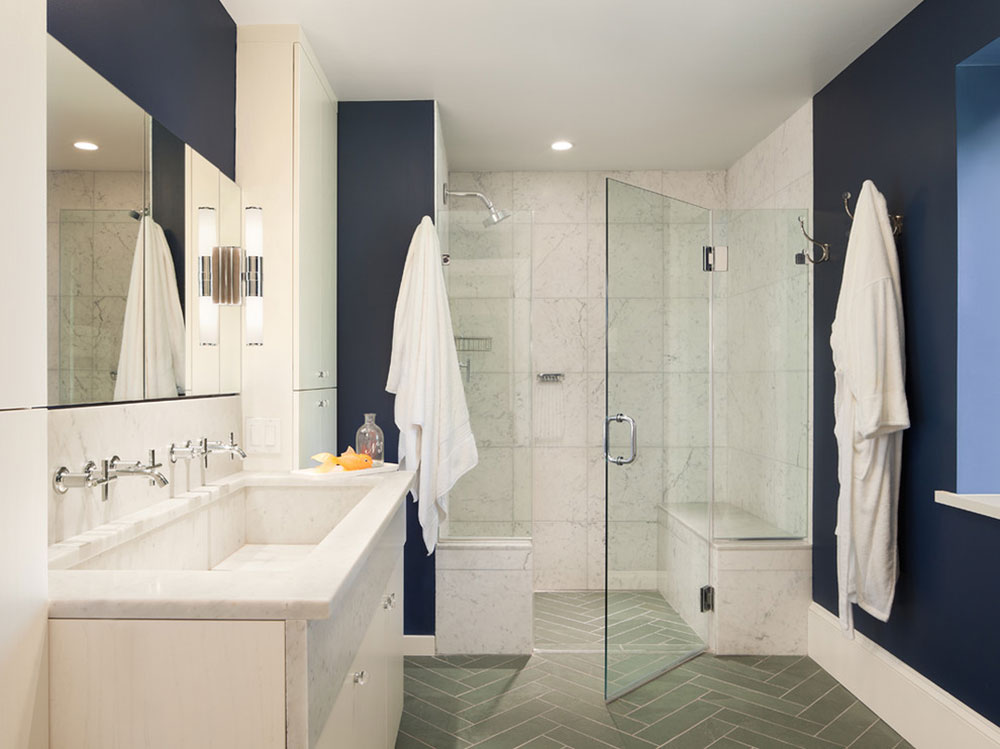 Image source: Metcalfe Architecture & Design
Image source: Metcalfe Architecture & Design
When people install a hardwood floor, they tend to only focus on the color. Just because it is hardwood, that does not mean you cannot make it interesting.
Do something different from the standard layout by using the herringbone design. Herringbone makes the room appear longer and generally less bland.
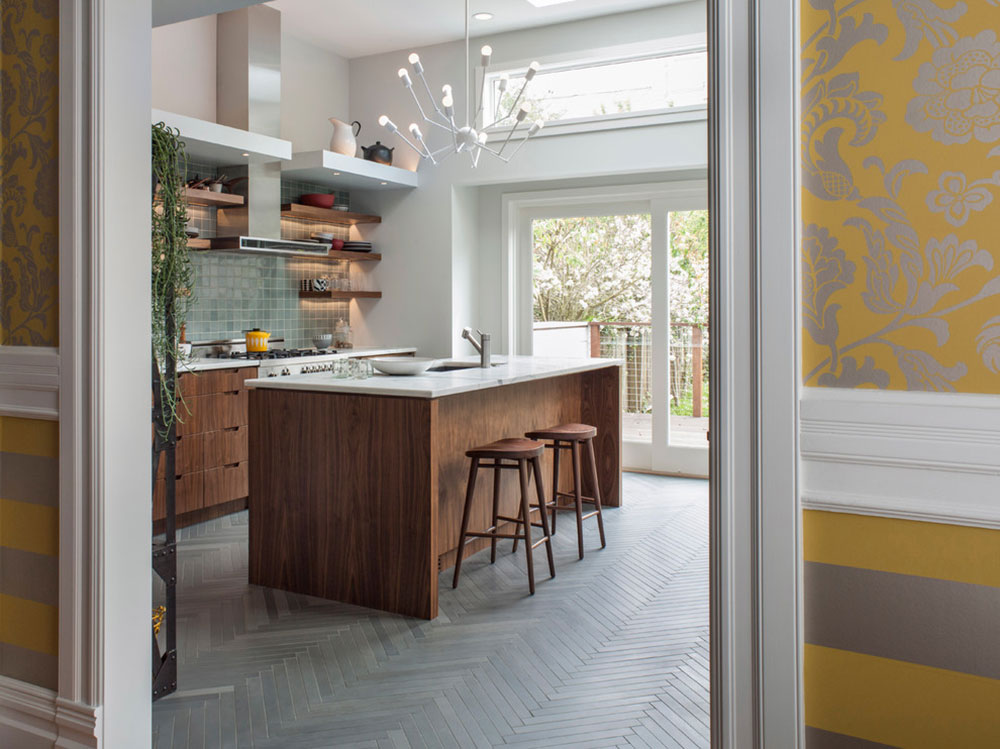 Image source: Hart Wright Architects, AIA
Image source: Hart Wright Architects, AIA
This design is made even better if your home has a staircase or balcony because you can then see the full pattern. Whereas with traditional hardwood, the flooring would be easily overlooked.
But with herringbone, guests will not be able to ignore the unique and impressive pattern. With herringbone, you can even make a boring office room seem interesting.
Walls
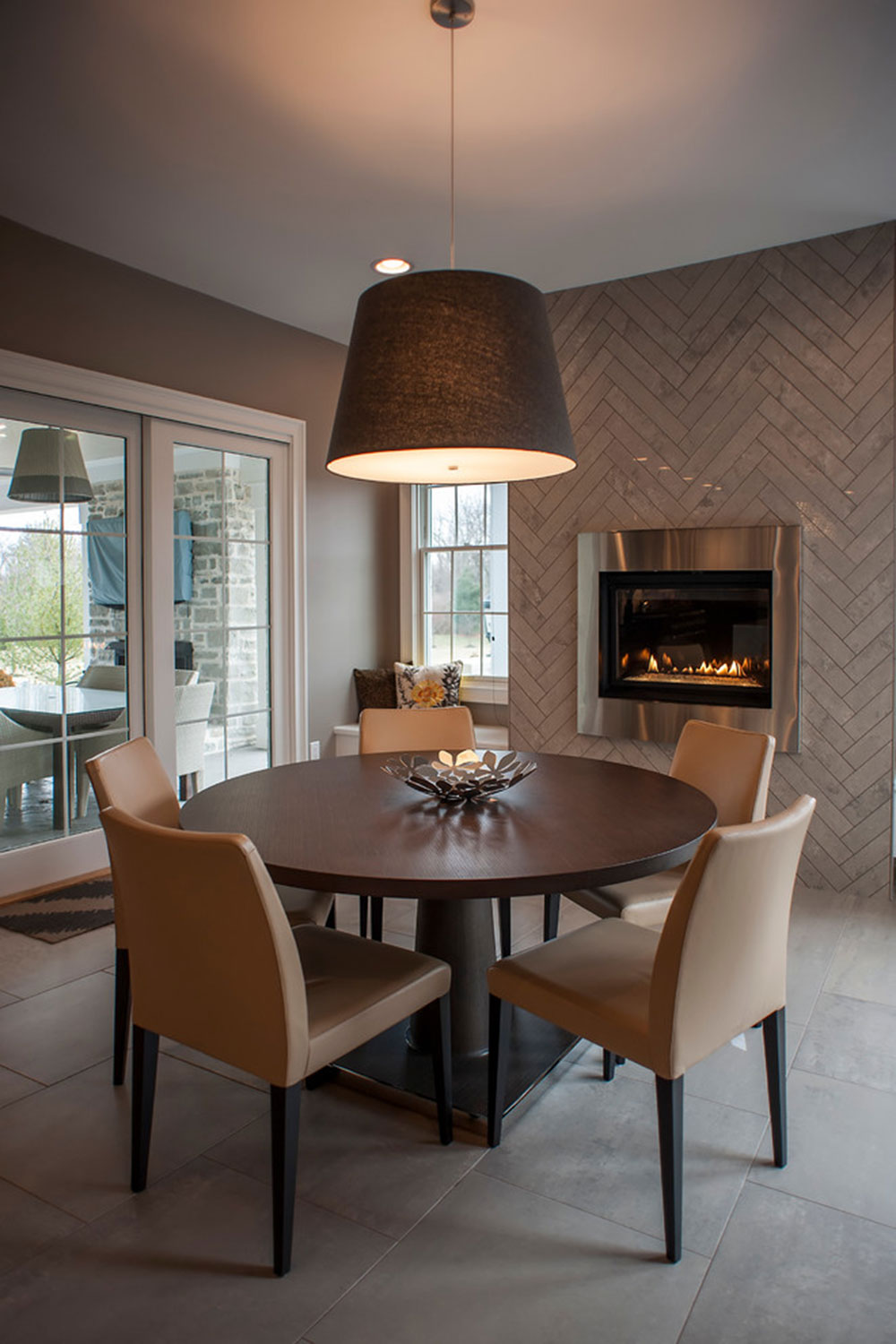 Image source: Hensley Custom Building Group
Image source: Hensley Custom Building Group
When it comes to walls, the size of the wall determines the best way to use herringbone. For smaller walls, such as backsplashes or fireplace surrounds, consider using a smaller format.
Smaller tiles allow for the pattern to still be seen, rather than cut off due to the limited space. On a larger wall, feel free to use longer tiles for the entire wall or for just part of the wall to accent certain features of the wall or room.
Backsplashes
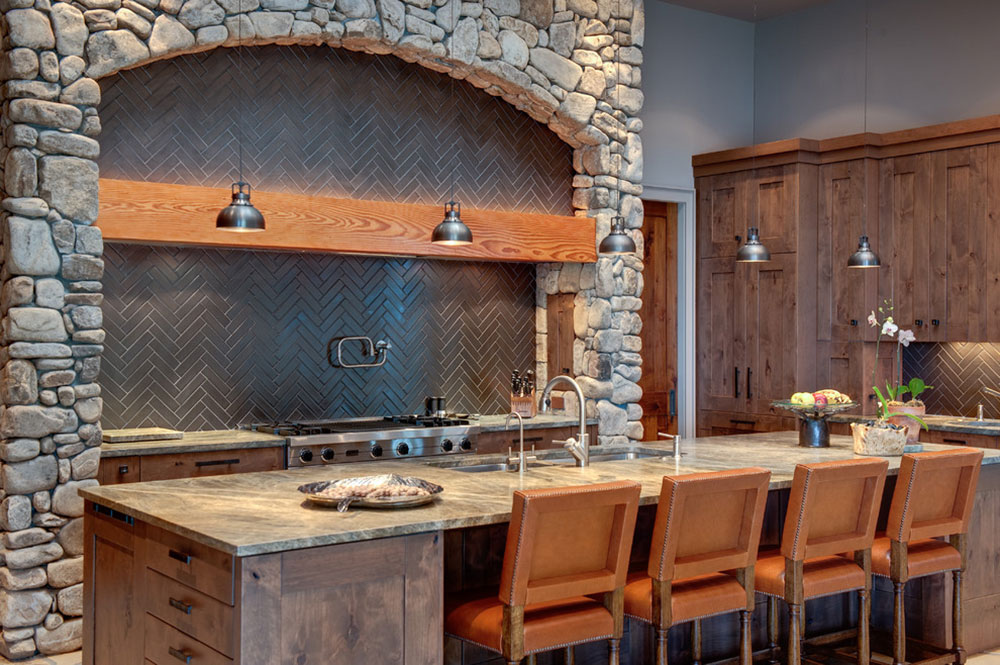 Image source: Moon Bros Inc
Image source: Moon Bros Inc
One of the best uses for this design is as a herringbone backsplash. It accents the kitchen in a way that does not stand out too much but does not go entirely unnoticed.
A white herringbone backsplash is simple yet elegant, offering a more interesting alternative to the usual patternless backsplashes.
Not only is the herringbone pattern backsplash more attractive, but it is also easy to achieve. Any backsplash tiles can be rearranged to form the herringbone pattern with ease.
There is no need to buy specific materials to achieve this pattern, and it is easy enough that you could actually form it yourself without the help of an interior designer.
A backsplash does not need to be just one design, and herringbone plays nicely with other patterns.
Try combining herringbone with simple geometric shape patterns or with chevron to create a more sophisticated and intriguing look to your kitchen. You can also add a bit of color to the herringbone pattern to make it stand out even more.
Herringbone is a very adaptable pattern, so do not worry if you think the backsplash area is too large or too small. Whatever the size, the herringbone pattern is always possible.
Although, if you are aiming for a more classic look for your kitchen, try a herringbone backsplash of 2×4 or 3×6 size. If you don’t care much for traditions and want to express such, go for a 2×8 space.
If you decide to make your wood flooring herringbone, consider going with herringbone backsplash tile as well. This create a recurring theme in your home that makes the home seem more thought-out and decorative.
To liven up the backsplash, try adding some lights around or on the area. You could also try a mix or alteration of both herringbone and chevron backsplash.
Herringbone Tiles
It may surprise you that there are actually several variations of the herringbone tile.
Whether it be by changing the color or the direction, there are many ways to make your herringbone pattern distinct and individualized.
Neutral Tiles
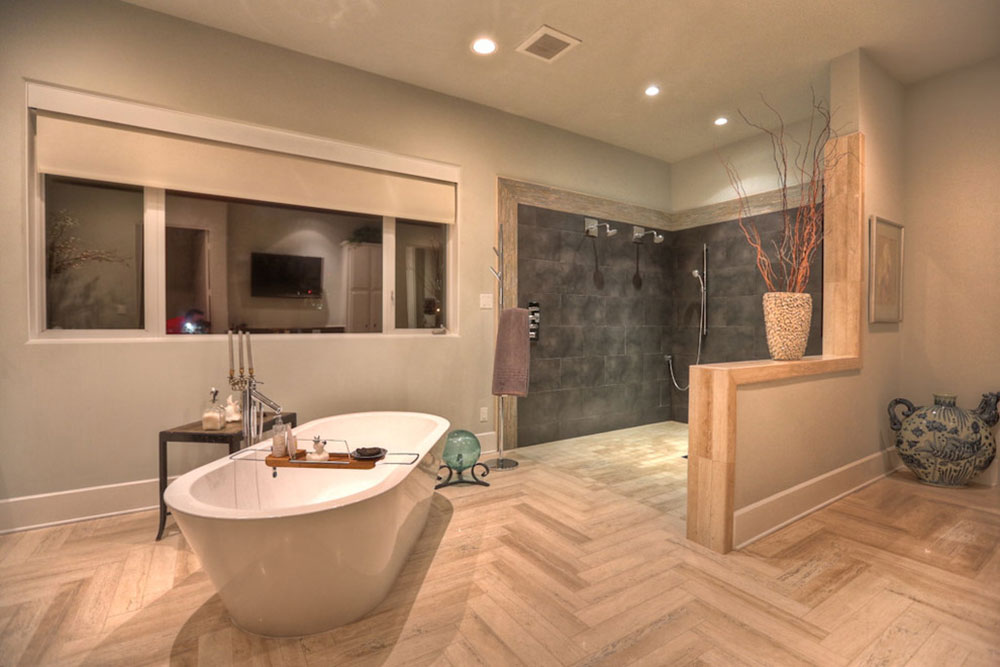 Image source: Masa Studio Architects
Image source: Masa Studio Architects
If you want your tiles to be rather neutral, white is a clear choice. But gray can work just as well while adding a bit of color to the pattern.
Gray is a very sleek color that can also help cover the annoying stains that white loves to show off. Gray offers more of a modern look and feel.
For the kitchen, try using a gray herringbone pattern along with stainless steal appliances to make it more contemporary.
This allows your kitchen to be modern and neutral while also giving style and personality to the room.
Dark and Graphic
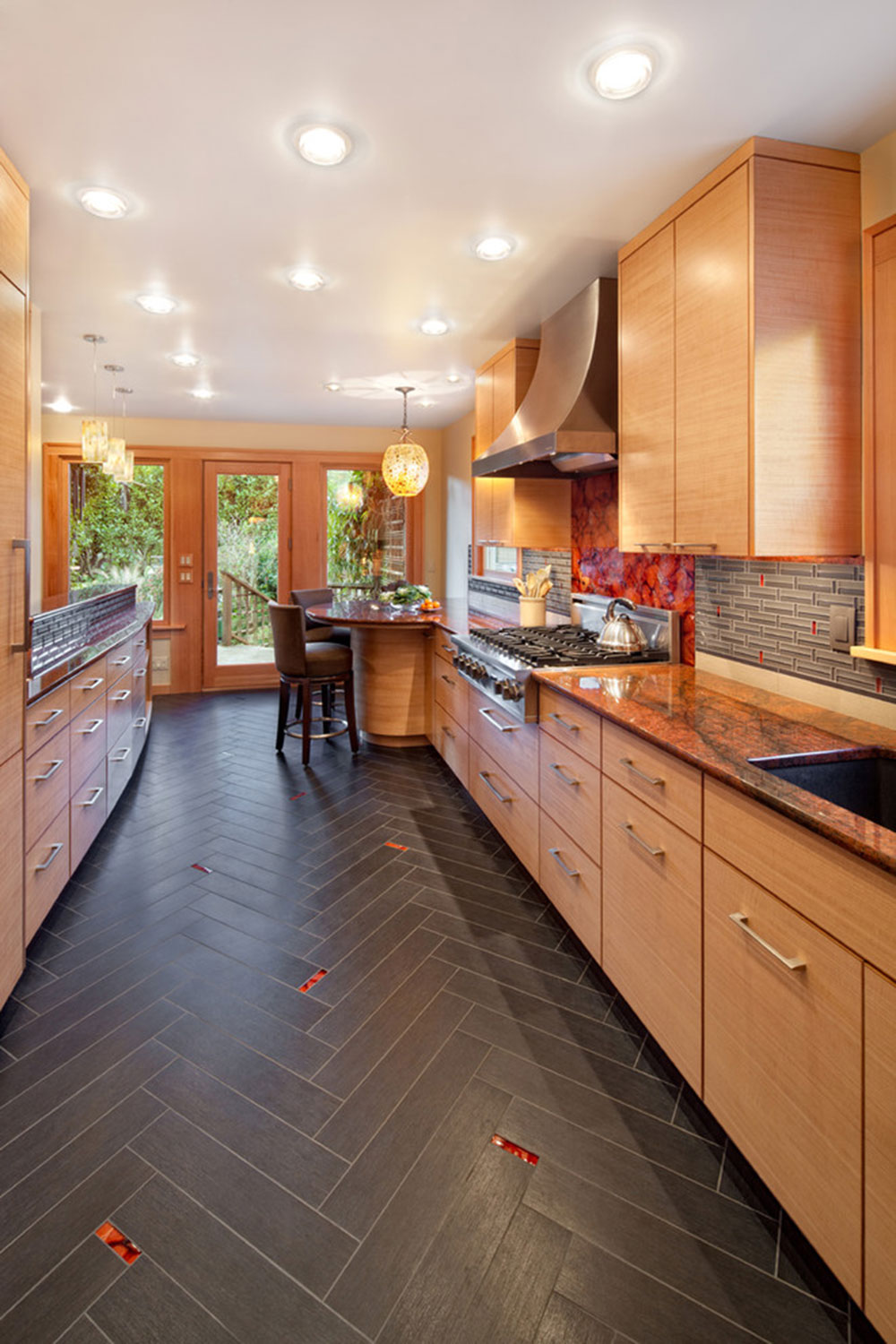 Image source: Giulietti Schouten Architects
Image source: Giulietti Schouten Architects
Use darker shades of gray and black to create a moody kitchen. Add some bright colors here and there, and you have a sharp, yet sophisticated, contrast that is sure to be an eye-catcher.
Another way to get this graphic effect is by using grainy, strongly-textured tiles. The texture of the tiles contrast with the crisp, geometric lines and shapes of the herringbone pattern.
This produces a certain visual that can be hard to create in other ways. Cover the entire wall with these tiles, and the room will have an impact strong enough to make an impressionable guest gasp.
Colorful Tiles
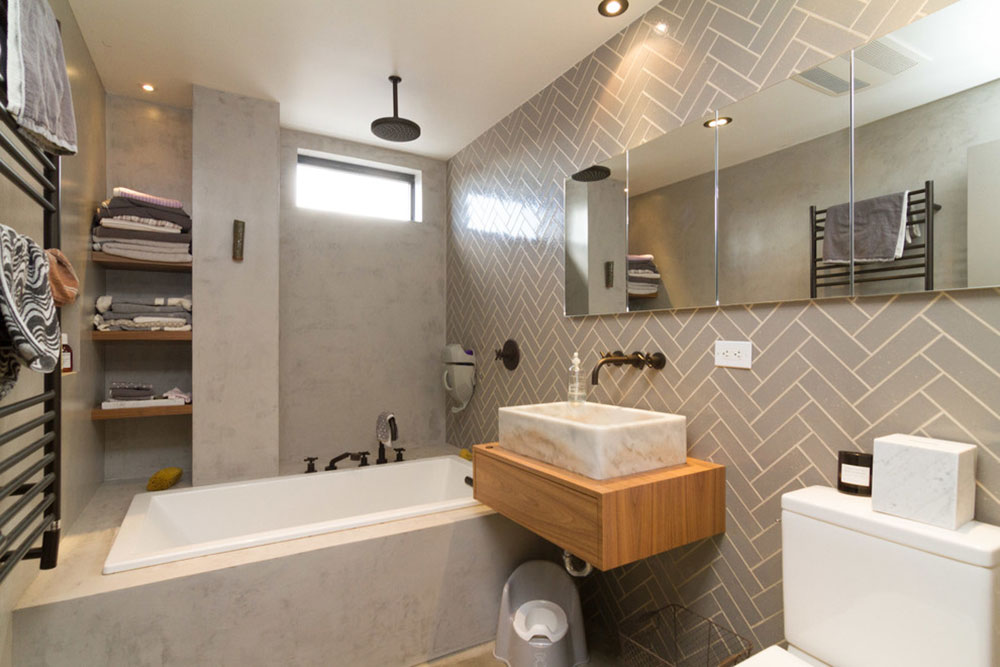 Image source: FILO Real Estate Group
Image source: FILO Real Estate Group
If you are light person with a vibrant personality, allow the herringbone tiles to reflect that. Choose bright colors for the tiles to add some fun to your home.
Or you could use a consistent dark or white color for the pattern and only add color every few tiles or so. This mixes up the pattern and could create a brilliant theme throughout your home.
It also keeps your wall, floor, or backsplash more interesting and appealing.
Different Directions
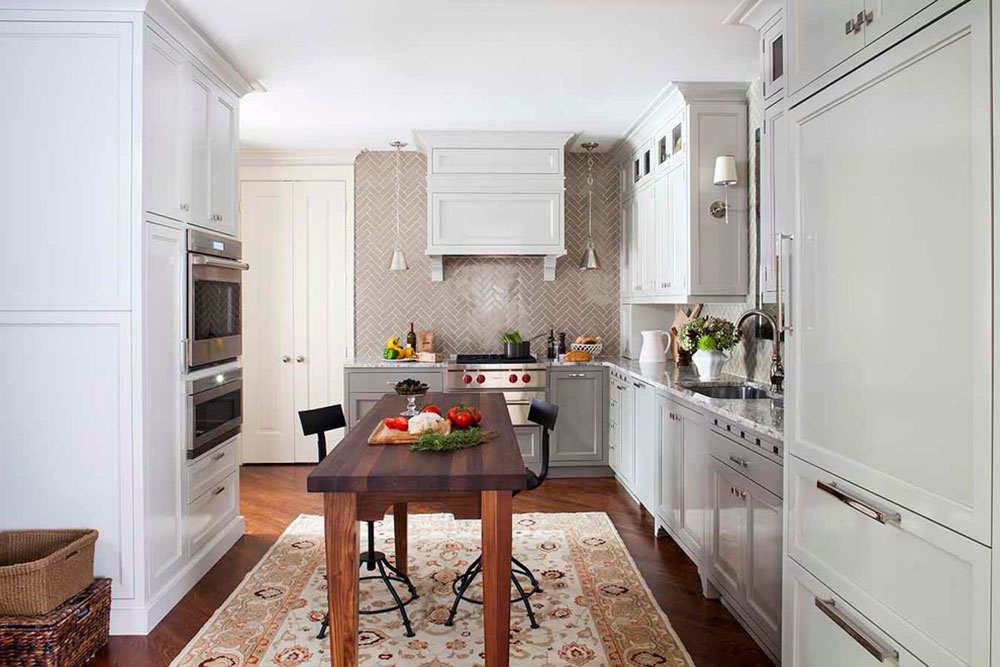 Image source: Terracotta Studio
Image source: Terracotta Studio
Color isn’t the only way you can add a twist to the traditional herringbone pattern. Arrange the tiles in any direction you want—vertical, up-side down, diagonal.
Be bold and create your own layout, such as stars, circles, stairs, etc. Feel free to be original since the herringbone design is easily adaptable and can work for almost anything!
Changing the direction of the tiles is a simple yet brilliant way to add some uniqueness and individuality to a classic design.
It can also call attention to certain areas of the room. For example, a vertical backsplash might carry a looker’s attention of to your stunning fridge or luxurious countertop.
Conclusion
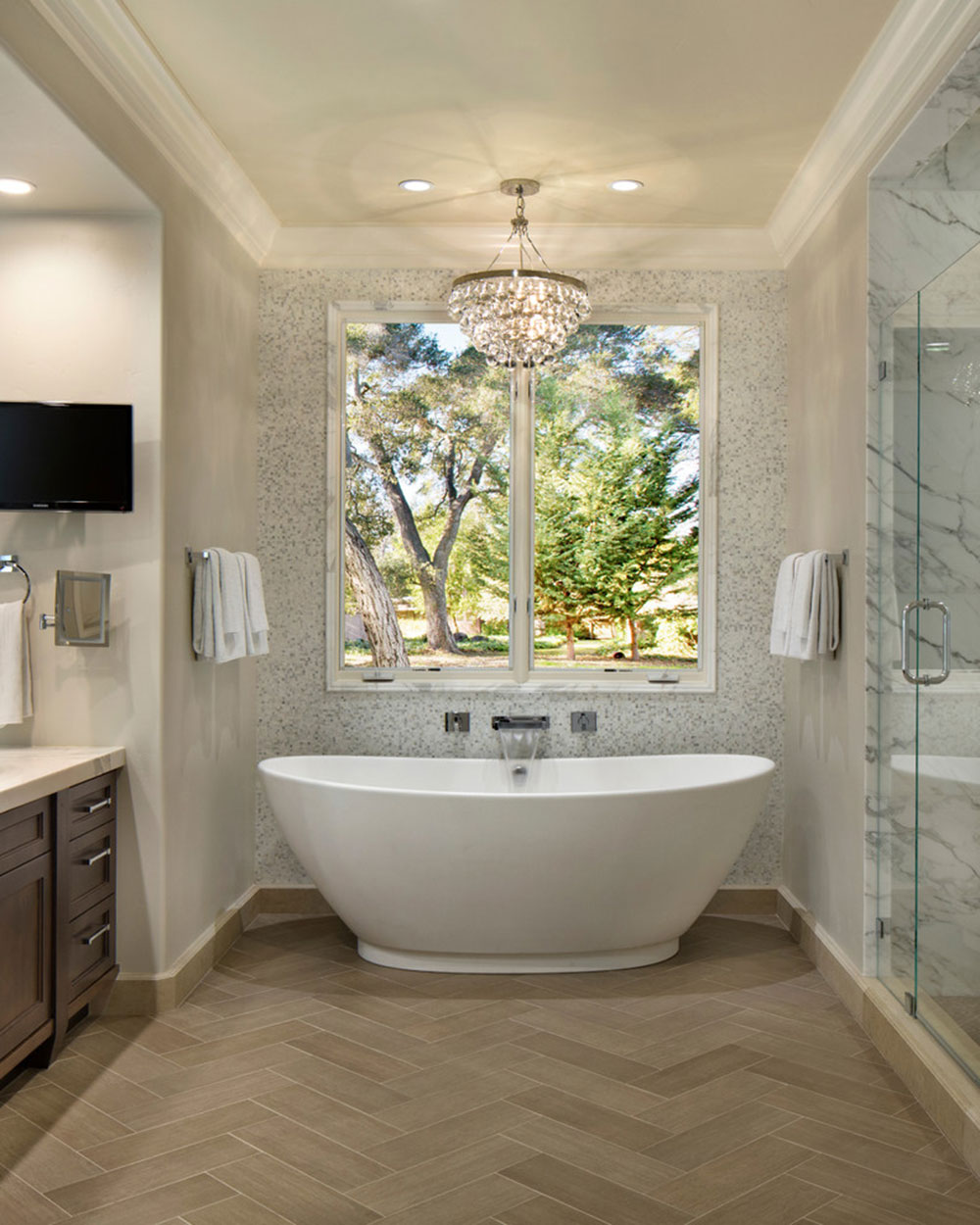 Image source: Allwood Construction Inc
Image source: Allwood Construction Inc
The herringbone pattern is a classic yet very modern design that works great in any room of the house. It is popular for its simplicity and amazing adaptability.
It can be used for flooring, walls, backsplashes, and more. Use it for bathrooms, kitchens, bedrooms—anywhere at all! It is easy to personalize the pattern by adding color and texture or by changing the direction of the tiles.
Herringbone can also work fabulously along side its similar but distinct cousin, chevron for an intricate design like no other.
There is a lot you can do with a pattern as elegantly simple as herringbone. No matter what the theme of your home is, there is a way herringbone can work for you.
You just have to give it a try, test out some different designs and techniques, and then fall in love with your herringbone pattern.

